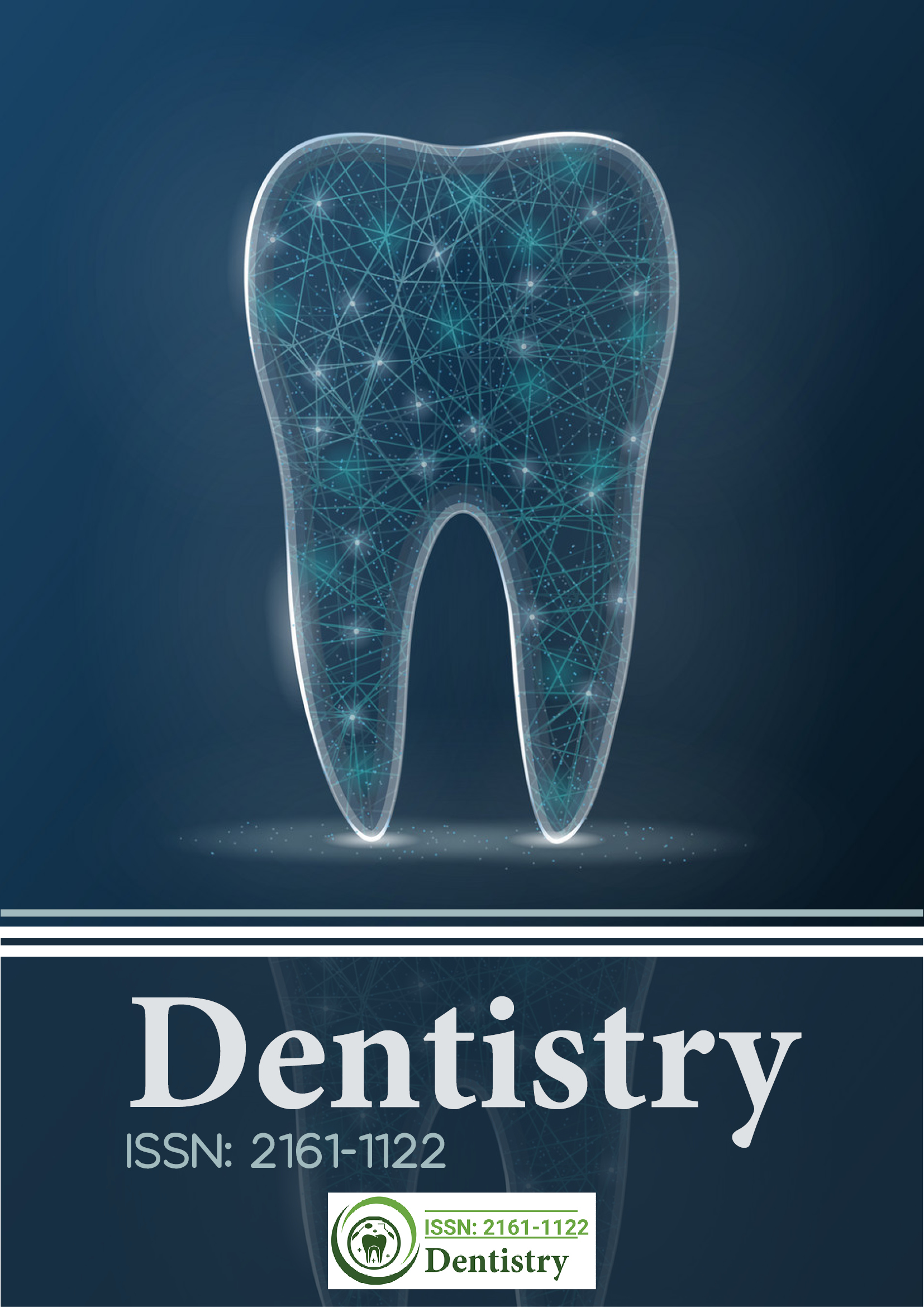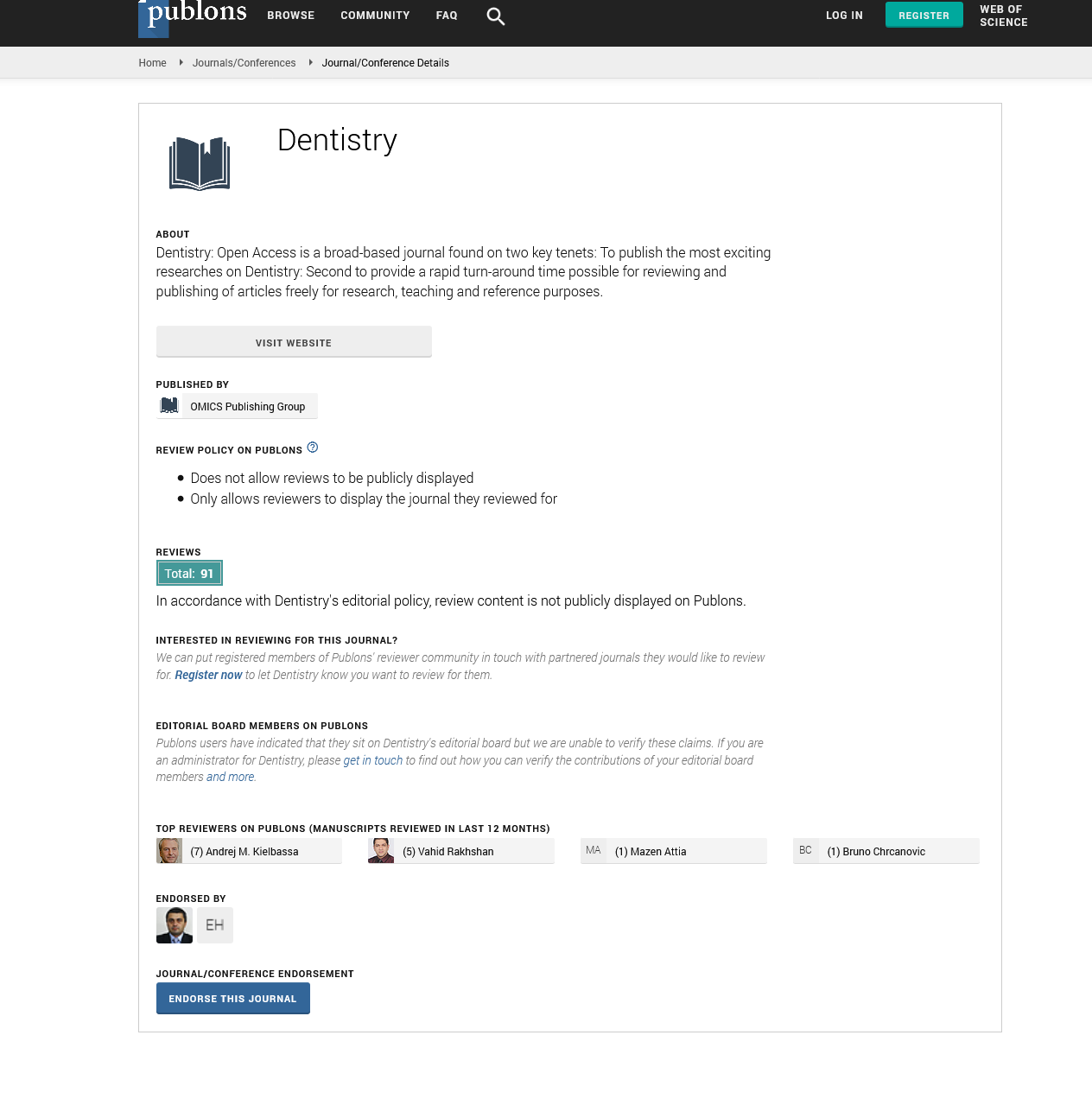Citations : 2345
Dentistry received 2345 citations as per Google Scholar report
Indexed In
- Genamics JournalSeek
- JournalTOCs
- CiteFactor
- Ulrich's Periodicals Directory
- RefSeek
- Hamdard University
- EBSCO A-Z
- Directory of Abstract Indexing for Journals
- OCLC- WorldCat
- Publons
- Geneva Foundation for Medical Education and Research
- Euro Pub
- Google Scholar
Useful Links
Share This Page
Journal Flyer

Open Access Journals
- Agri and Aquaculture
- Biochemistry
- Bioinformatics & Systems Biology
- Business & Management
- Chemistry
- Clinical Sciences
- Engineering
- Food & Nutrition
- General Science
- Genetics & Molecular Biology
- Immunology & Microbiology
- Medical Sciences
- Neuroscience & Psychology
- Nursing & Health Care
- Pharmaceutical Sciences
Accelerated osteogenic orthodontics
19th American Dental Congress
December 08-10, 2016 Phoenix, USA
A Arif Yezdani
Bharath University, India
Keynote: Dentistry
Abstract:
The various methods to accelerate orthodontic tooth movement are surgical methods, physical/mechanical stimulation methods like, low level laser therapy, resonance vibration, magnetic fields and electric current. Molecular methods, pharmacological agents and hormones too play a vital role in accelerating orthodontic tooth movement. Wilckodontics, an amalgamation of two time-tested procedures, namely, selective alveolar decortication and periodontal alveolar augmentation collectively called Accelerated Osteogenic Orthodontics (AOO) in conjunction with efficient orthodontic bio-mechanics, paved the way for rapid tooth movement with shortened treatment duration. Professional adults and adolescents desirous of quick orthodontic treatment sans the long stretched treatment duration interspersed with multitude of appointments, are potential candidates for this procedure. AOO exploits the dynamics of bone physiology and stimulates and harnesses the innate potential of living bone. It is a procedure wherein selective decortication of alveolar bone is done which in turn induces an increase in hard and soft tissue turnover by a process known as RAP (Regional Acceleratory Phenomenon) that potentiates tissue organization and healing. The cancellous portion of the alveolar bone is induced into a more pliable, transient demineralized state called osteopenia by osteoclastic activity. This catabolic process is followed by an anabolic process wherein new bone is formed and the osteoid matrix begins to mineralize. This demineralization-remineralization phenomenon facilitates rapid tooth movement. The RAP commences a few days after surgery, peaks between 1-2 months when catabolic and anabolic responses are 3-fold higher, dissipates to a normal steady state by 11 weeks after surgery, and takes about 6-24 months to resolve completely. The periodontal alveolar augmentation with a bone graft improves the structural integrity of the periodontium. It augments, reshapes, and provides additional bone support and in certain situations provides a degree of improvement in lip posture too. Pre-existing alveolar fenestrations over root prominences are effectively eliminated, thus reducing the probability of bony dehiscence formation. The advantages of AOO are that there is effective maintenance of an adequate zone of gingival attachment with no gingival recession or probing depths greater than 3mm, good presence of interdental papillae and loss of tooth vitality or significant reduction in radiographic height of neither crestal bone nor apical root resorption. Relapse is minimized as the volume of the alveolar housing is increased with the bone graft. Initial lack of mineralization is adequately compensated with continued mineralization in the retention period. Since overall treatment time is reduced, bacterial time-load factors is also reduced with consequent decrease in infection and incidence of dental caries. A couple of cases are shown to highlight the AOO procedure, which is inveritably an indispensable adjunct in an orthodontist�??s armamentarium.
Biography :
A Arif Yezdani has obtained his BDS in 1985 and MDS in 1989 both from University of Madras, India. He has worked abroad as a Consultant and Specialist in a prestigious Specialist Dental Centers of Ministry of Health, Kingdom of Saudi Arabia. He has presented various scientific papers both in national and international conferences, symposiums and workshops. He was the Co-Chairman of a scientific session of an international symposium and of a national workshop and also Course Director of a workshop on Accelerated Osteogenic Orthodontics. He was also Coordinator for Indian Academy of Aesthetic and Cosmetic Dentistry (IAACD) and Colgate-IDA “Future Dental Professionals” program. Presently, he is a Convener of Clinical Society Meetings in Sree Balaji Dental College and Hospital, Chennai, India and has convened 112 clinical society meetings till date.
Email: arifyezdani@yahoo.com

